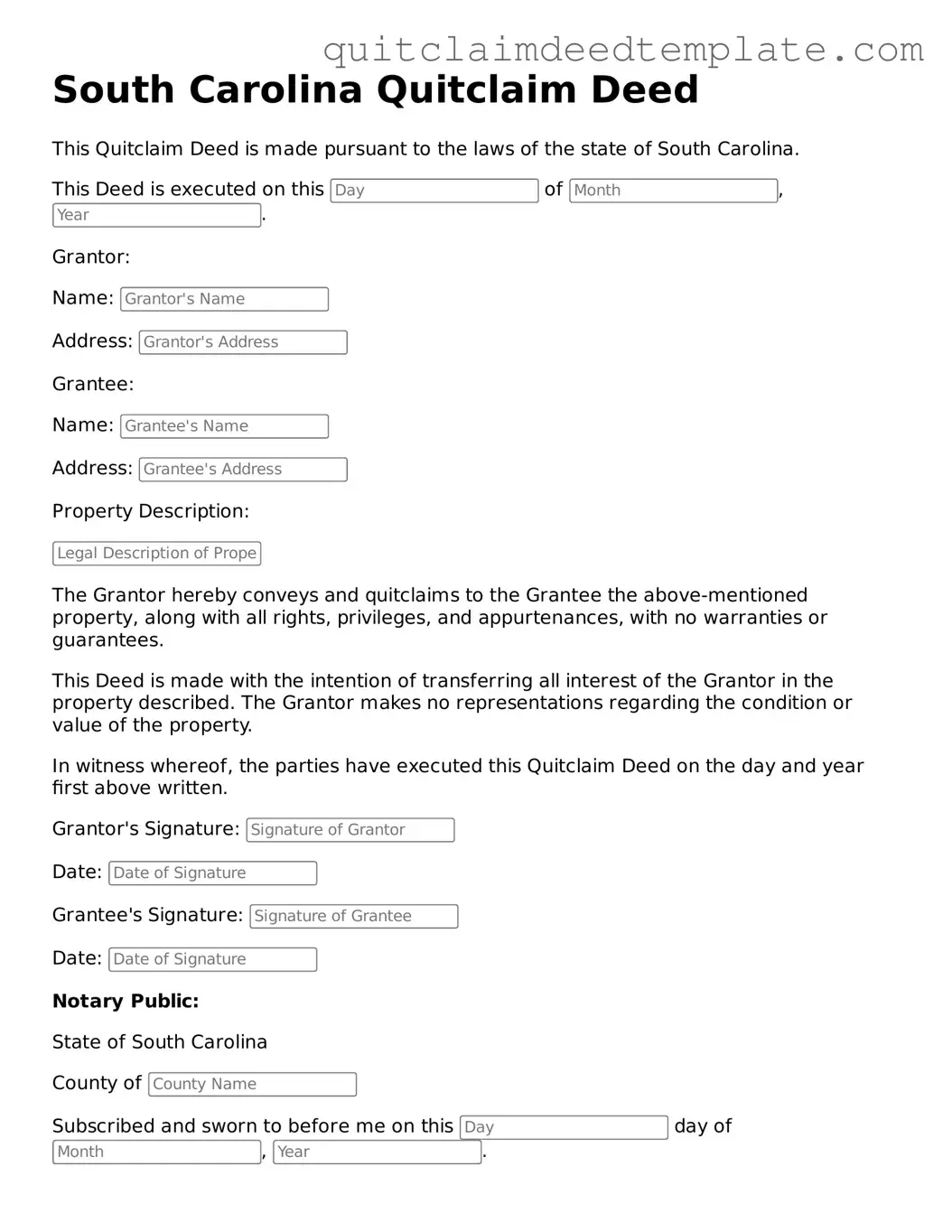Documents used along the form
In South Carolina, the Quitclaim Deed is a common legal document used to transfer property ownership without warranty. However, several other forms and documents often accompany this deed to ensure a smooth transaction and to provide necessary legal protections. Below is a list of these documents, each playing a vital role in the property transfer process.
- Property Disclosure Statement: This document provides potential buyers with information about the condition of the property. Sellers must disclose any known issues, such as structural problems or environmental hazards, ensuring transparency in the sale.
- Title Search Report: A title search report reveals the history of ownership and any liens or encumbrances on the property. This report is crucial for buyers to confirm that the seller has the right to transfer ownership and that the property is free from legal claims.
- Affidavit of Title: This sworn statement by the seller confirms their ownership of the property and asserts that there are no outstanding liens or claims. It provides additional assurance to the buyer regarding the legitimacy of the sale.
- Bill of Sale: When personal property is included in the real estate transaction, a bill of sale documents the transfer of ownership of these items. This can include appliances, furniture, or other fixtures that are part of the sale.
- Closing Statement: Also known as the HUD-1 Settlement Statement, this document outlines all financial aspects of the transaction, including the purchase price, closing costs, and any adjustments. It serves as a detailed account for both parties at closing.
- Deed of Trust: In cases where financing is involved, a deed of trust secures the loan by placing a lien on the property. This document outlines the borrower's obligations and the lender's rights in the event of default.
- IRS Form 1099-S: This form reports the sale of real estate to the Internal Revenue Service. It is required for transactions involving real property and helps ensure compliance with tax regulations.
Each of these documents serves a specific purpose in the property transfer process in South Carolina. Understanding their roles can help both buyers and sellers navigate the complexities of real estate transactions more effectively.
